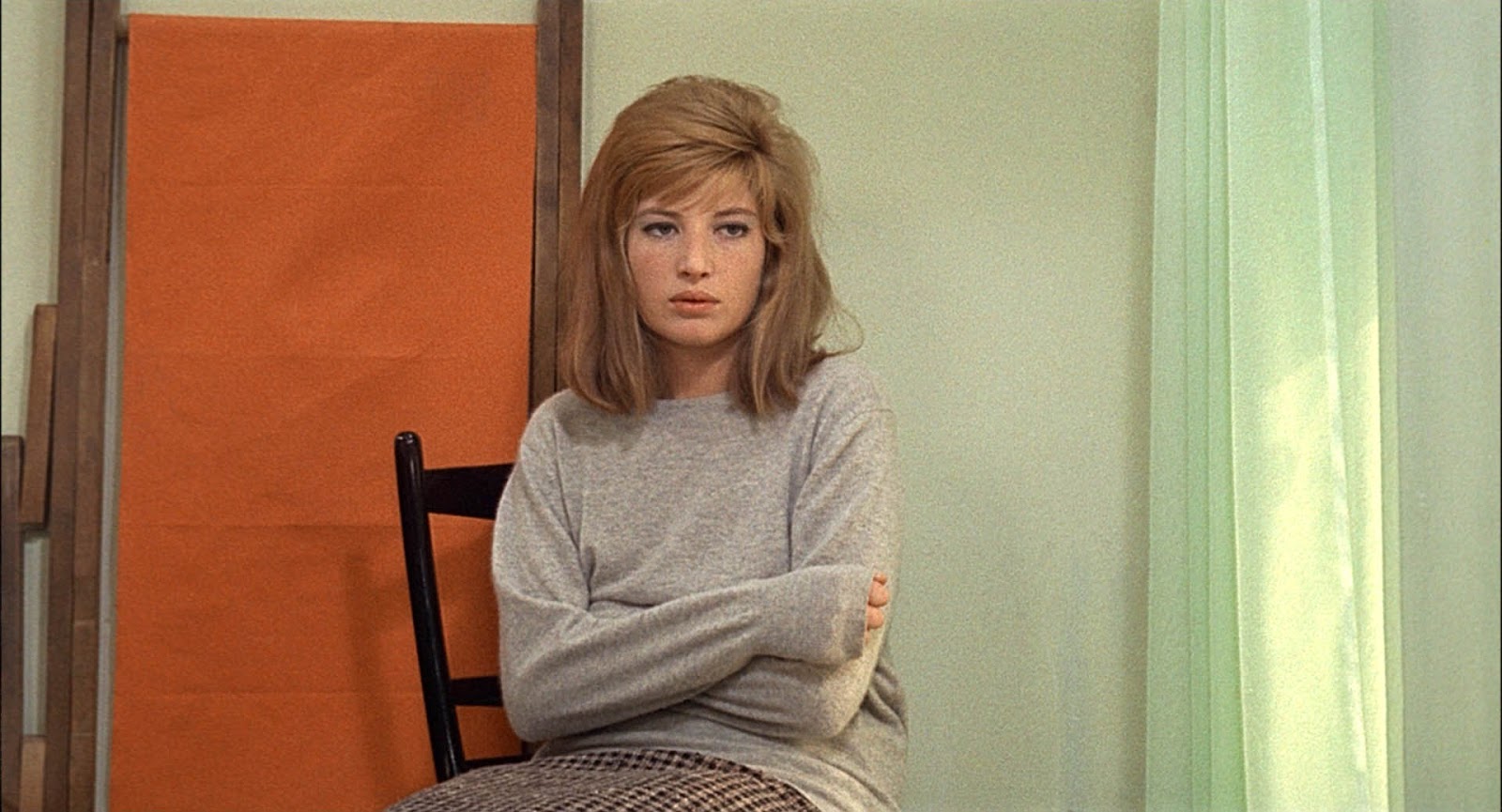
Red Desert came out in 1964 and it was a very first attempt of Antonioni to make a colored film. The film followed Antonioni’s monumental set – The Alienation Trilogy (L’Avventura, La Notte, L’Eclisse). For many people, including me, Red Desert is the extension of those films. However, what really makes Red Desert exalted among its predecessors is a subtle implication on the root causes of contemporary ennui. The trilogy, like its title suggests, explores the alienation of post-war bourgeoisies, their lack of excitement and existential dreads. In Red Desert, Antonioni explores the source of this seemingly dull modernity.
Antonioni once said: “we are saddled with a culture that hasn’t advanced as far as science.” – These words perfectly capture the essence of his work. His characters live in a very accelerated world; they go through awry human experiences; and they are doomed to inadequately search the scatters of emotions and sentiments in the world that only continues to demolish them. These are the characters that happen to live in the era of transitions. Their moral values vanish as they are unable to come up with a new set of ideals. They live in the world that advances only on the façade, with its technological and scientific headways, but fails to forge anything new morally or spiritually. It all results in the frustration of Antonioni’s characters and their lives. They are metaphysically impotent.
Red Desert shows its audience the core of all emotional challenges that take place in Antonioni’s film universe: subversive world full of poisonous smoke, gigantic factories, polluted air, and industrial wastelands.
The story follows Giuliana, a woman who tries to cope with her existential crisis while her husband becomes more and more successful at the petrochemical plant that he manages. Meanwhile, Giuliana and Corrado Zeller (her husband’s co-worker) find themselves enchanted by one another.
1. Monica Vitti Delivers Her Best Performance
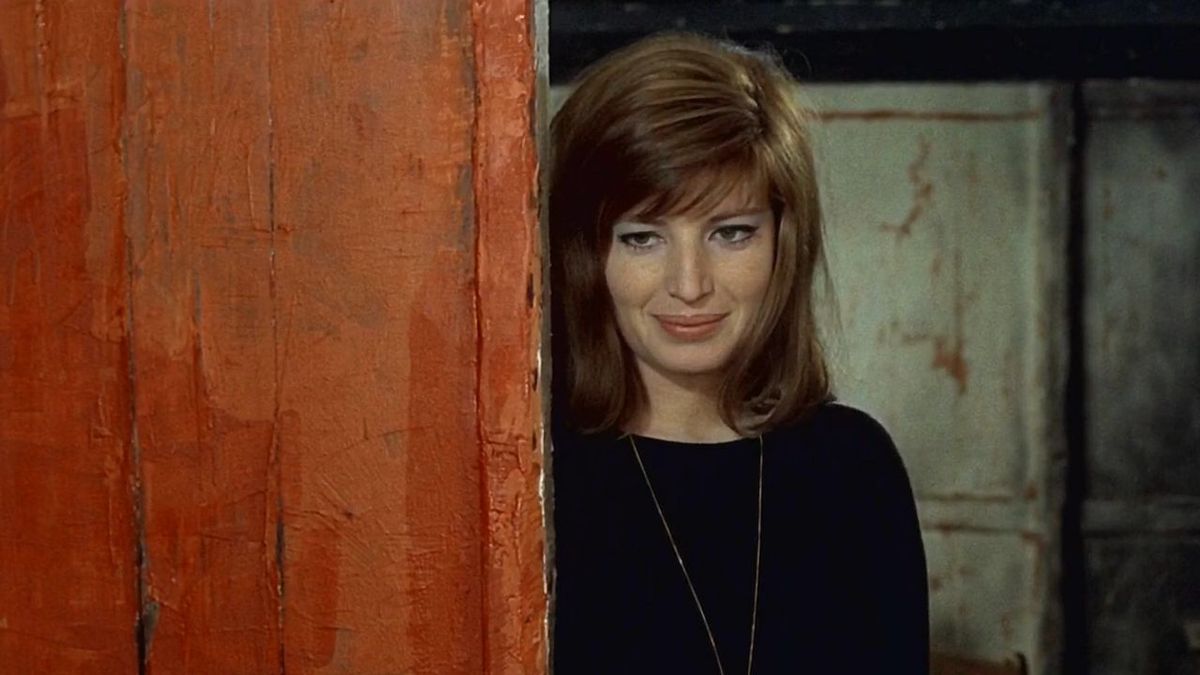
Collaboration between Vitti and Antonioni has been career-defining for both of them, nevertheless, Monica Vitti, arguably, gives her best performance in Red Desert which was the last time they ever made a major film together.
Throughout the span of Alienation Trilogy, Monica Vitti had to express both emotional outburst and indifference; childishness and seriousness; sensuality and charm. She often had to speak with her eyes rather than words that are never too many in Antonioni’s screenplays anyway. Yet, in Red Desert she transforms into the embodiment of her modern-day ennui herself.
She absolutely takes over the character who suffers from no “apparent reasons”. She, at the same time, shows the grief of her being and the sweetness of a newly found desire (Corrado).
Her screen presence, with her Art-Nouveau-painting-beauty, radiates elegance coupled with both serenity and turbulence.
2. Giovanni Fusco’s Striking Score
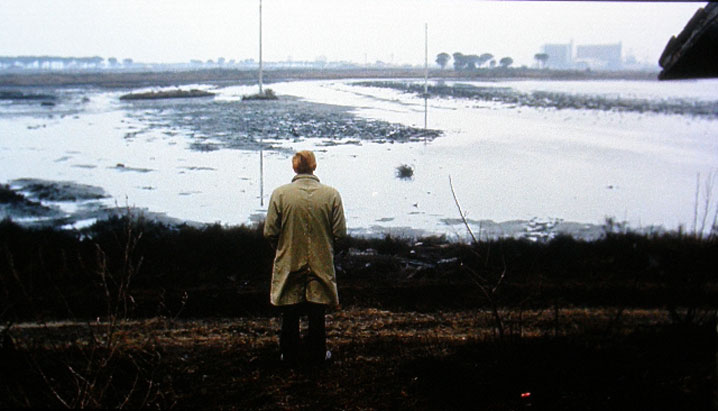
Fusco, also frequent collaborator of Antonioni, creates the most aching, agony-tinged score. While the title sequence goes on, we see Italian industrial town full of factories and polluted air. The musical accompaniment, I believe, expresses the flip sides of industrial success. Fusco’s nerve-trembling sounds are the background for a very harmonic and exquisite voice. The apparent contrast of music and voice infers the disparities of how this progress could be perceived.
Antonioni was famous for his usage of music – he never overuses it. That being said, whenever he attaches music, it emotionally strips a character. Fusco’s score builds up overwhelmingly tormented emotional state before the first scene of the film even forays.
3. Colors
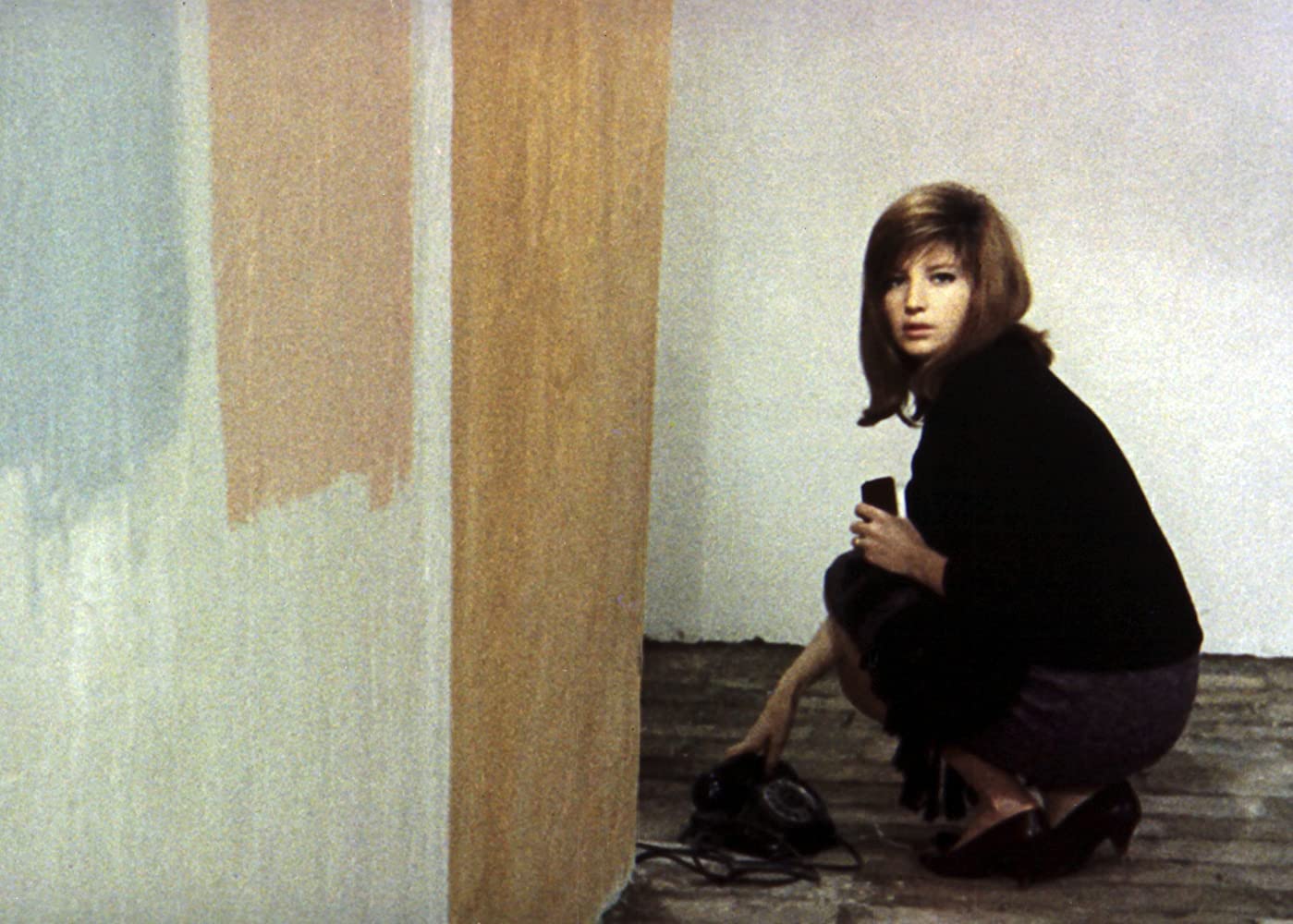
After many black-and-white masterpieces, Antonioni finally decided to bath his images in colors. His palette is so frantic, feverish, and ill-hued that they consume everything around. Nevertheless, these lifeless colors saturate every single scene with a very unique sense of beauty. The beauty that swallows Giuliana, but also pushes her to contemplate and reflect.
There are some scenes where color arrangement basically tells you how to read the given episode. For example, at the beginning of the film, we see Giuliana in the middle of grey bricked fences, chemical plants, and enormous masts. Everything looks perished and sterile except for her coat which is lush green. It hints on the clash between her nature and her surroundings.
4. Poetic Depiction of Industrialism

The way Antonioni arranges each scene, uses color, and stirs a camera create irresistibly graceful and lyrical atmosphere. Despite the repulsiveness of the industrialized town, it has some sort of splendor that allures a viewer. Suddenly, yellow emissions, poisonous smoke, and grey doom-looking factories enchant you. Antonioni himself declared that with this film, he attempted to show the beauty of factories and chemical plants.
The beauty of industrialism is the beauty of something that is apparently ugly and hideous. However, he believed, it was the poetry of the contemporary world. Modern man, according to Antonioni, has to seek aesthetic pleasure in foggy pollution and colorless factories; he has to transform soulless wastelands into flourishing greenery. If he fails, he becomes absorbed by anxieties, fears, and worries. Just like Giuliana.
The idea of finding poetical beauty in modern filth-bursting environment is very similar to French poet – Louis Aragon. He also tried to find lure in contemporary world; his poetry explored the concept of what modern-day aesthetic consisted of: gasoline pumps, roadside heat, green golf courses, and more. Similarly, Antonioni deconstructs the idea of beauty and aesthetic perception.
5. Foggy Scene
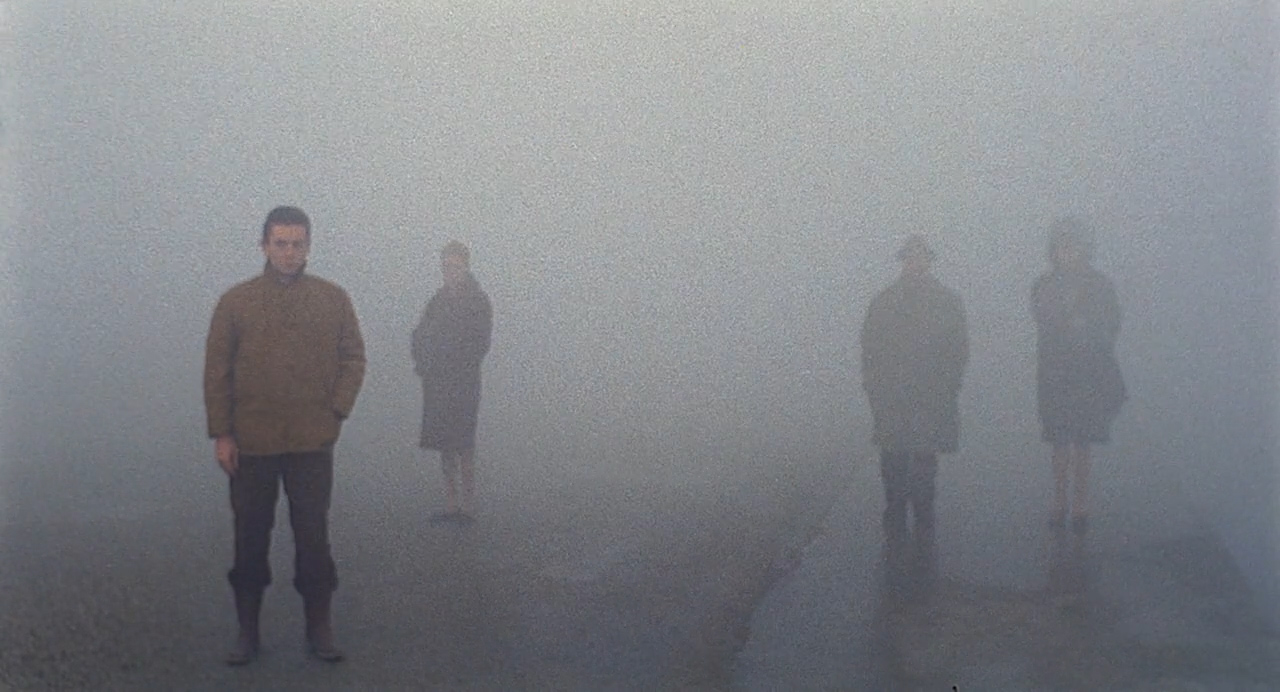
After Giuliana spends some time with friends in a remote shack where everyone small talks about variety of topics excluding her, the most memorable scene takes place. Giuliana, haunted and frightened, is encircled by layers and layers of haze. Ugo (husband), Corrado, and her friends are all present, yet they look lifeless and frozen. Emotional climax reaches its pinnacle when blurry flash cuts start swaying on their faces.
Beforehand, an unknown ship arrives near their shack and Giuliana sees it being quarantined because of an infectious disease it carried. It triggers her fears and anxieties that push her over the edge.
This scene evokes a very 21st century-looking dystopian, post-apocalyptic film set with its loads of fog, robot-looking people, and the lack of any sign of human experience.